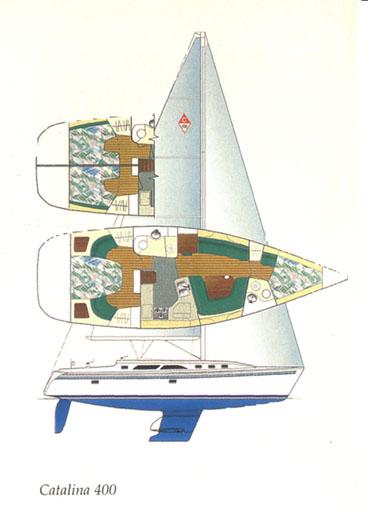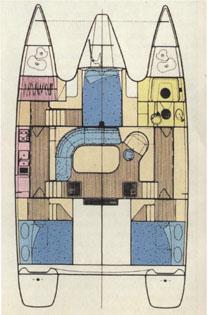
- •Часть 1 настоящего издания shipbuilding, автор Чумаков м. А. Удк 802.0:629.12(075.8) ббк 81.2Англ.Я 7. Вышла в свет в 2007 году в бнту
- •Unit I water vessels
- •Text 1a
- •Text 1b
- •Text 1c
- •Unit II passenger ships
- •Text 2a
- •Text 2b
- •Text 2c
- •Unit III cargo ships
- •Text 3a
- •Text 3b
- •Text 3c
- •Unit IV
- •Specialized vessels
- •Text 4a
- •Text 4b
- •Text 4c
- •Unit V art of shipbuilding
- •Text 5a
- •Text 5b
- •Text 5c
- •Unit VI shipbuilding technologies
- •Text 6a
- •Text 6b
- •1. Deck; 2. Transverse bulkhead; 3. Side frame; 4. Stem; 5. Forepeak; 6. Side stringer; 7. Double bottom; 8. Floor; 9. Afterpeak; 10. Sternpost; 11. Hatch; 12. Carling; 13. Deck beam
- •Synonyms:
- •Antonyms:
- •Text 6c
- •Installations
- •Hull Installation Work:
- •Electrical Installation:
- •3) Installation of the Auxiliary Machinery:
- •4) Installation of Boilers:
- •Unit VII shipbuilding in belarus
- •Text 7a
- •Text 7b
- •Text 7c
- •Belarusian sea port
- •Unit VIII future perspectives of ship-building
- •Text 8a
- •Ships of the future
- •Text 8b
- •Text 8c
- •Intelligent systems of ship automation
- •Supplementary texts
- •Vessel familiarization While Staffing a Liner
- •Minimum Requirements for the Vessel Personnel
- •Systems Of Signals
- •Navy ships of the early xxth century
- •Three from catalina
- •A “baby” in the cats’ family
- •Addison’s shipyards
- •Perspective ships. General requirements and ways of implementing
- •The main directions of the development and the features of the perspective ships
- •Appendix Types of Boat Hulls
- •Major Shipwrecks
- •Directions of a Boat
- •Abbreviations and symbols
- •Some geographical and proper names
- •Vocabulary
- •Contents
Three from catalina
Two new designs and an update of an older one will be represented by this American yard, which is celebrating its 25th anniversary this year. All three are in the company’s tradition of spacious, practical cruising yachts, which offer a lot of boat for the money.
T he
12.3 m Catalina
400 has
a massive interior with the galley being the central feature. The
saloon has a dinette with seating for seven and the self-contained
forecabin is also generously proportioned. Astern she can be fitted
with a huge master cabin or two, still sizeable, cabins for crew. On
deck she has a powerful masthead rig and large cockpit, with twin
steering position and a large table. She is available in different
keeled (deep fin or shallow wing) versions.
he
12.3 m Catalina
400 has
a massive interior with the galley being the central feature. The
saloon has a dinette with seating for seven and the self-contained
forecabin is also generously proportioned. Astern she can be fitted
with a huge master cabin or two, still sizeable, cabins for crew. On
deck she has a powerful masthead rig and large cockpit, with twin
steering position and a large table. She is available in different
keeled (deep fin or shallow wing) versions.
The Catalina 380 (11.75 m) is a very similar package on a slightly smaller scale.
The Catalina 34 MkII is based on the well-proven hull but with an improved interior.
-
A “baby” in the cats’ family
T he
Venezia 42 is
a
new
“baby”, the smallest one, in a fleet of cruising cats ranging up
to 20 m. A big looking, even by catamaran standards, craft (12.6 m),
she is only 6.6 m wide and weighs about 6.5 t. In common with her
larger sisters, she has a moulded pod extending forward from the
bridgedeck. It looks attractive in the drawings and in reality is
probably most suitable for children.
he
Venezia 42 is
a
new
“baby”, the smallest one, in a fleet of cruising cats ranging up
to 20 m. A big looking, even by catamaran standards, craft (12.6 m),
she is only 6.6 m wide and weighs about 6.5 t. In common with her
larger sisters, she has a moulded pod extending forward from the
bridgedeck. It looks attractive in the drawings and in reality is
probably most suitable for children.
The interior is clean, light and functional with a minimum of wood trim to keep building simple, weight low and maintenance easy. It has two double cabins and a heads compartment in each hull, an efficient galley, a bit awkward but large dining saloon, and rather small navigation area on the bridgedeck.
In other words, being efficient but not overlarge, the interior is the sort, which encourages the outdoor life.

Addison’s shipyards
During the 19th century, Maine coast villages revolved around the construction of wooden sailing vessels. The vessels in Addison helped transport agricultural products to distant markets. Addison's shipyards built mostly schooners but barks and brigs were also built there.
British ships along the Maine coast brought Maine ship building to a halt during the Revolution. At the beginning of the 19th century, ship building had recovered.
Leander Knowles was the most productive shipbuilder in Addison. He built 50 vessels in his lifetime and died in 1888.
Shipyards were places for people with little or no skills to be employed. In 1850, 25 men from Addison were filed as ship carpenters. Most work was done by ax, adz, saw, auger, and hand. You could even make a living by sealing cracks between planks.
The ship's blacksmith made a great deal of items that held the ships together. There were spikes, bolts, mast caps, and chain links used on the ships.
One of Addison's independent sail lofts was owned by Oscar Brown.
Francis Aymer made "Pump and Block." He supplied blocks for many shipyards in coastal towns. The 1850's census indicated that Aymer used lignumvita, ashplanks, and iron sogs to produce 2000 block shells, 16 vessel wheels, 12 vessel pumps, 1400 vessel blocks in a single year.
Shipbuilding was definitely a big industry in Maine during the mid–19th century. By 1850 Maine had made more ships than any other state.
